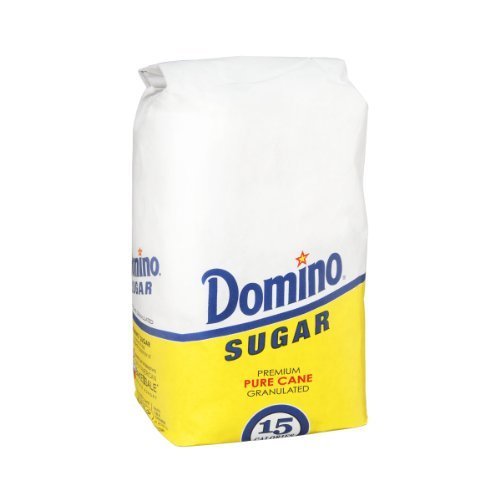Benjamin Sobieck's Blog, page 15
April 23, 2015
On Writing Knives - An Italian Stiletto Switchblade for Modern Characters
The classic switchblade of fiction most people picture in their minds is an Italian stiletto. That’s not a model per se, it’s more of a style, and it looks like this:
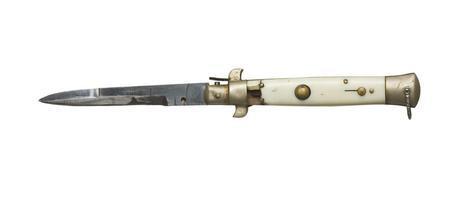
As I’ve written before, that’s an old school style that’s fallen by the wayside. New switchblades use modern technology and are so different that they’re called “automatic knives.” They look something like these Protech models:

But that doesn’t mean Italian stilettos are off-limits for modern day settings in fiction. Even though they’ve dropped out of popularity, the style has evolved over the decades. A character with a brand new Italian stiletto might carry something that looks like this:
[image error]
That’s a Bear OPS AC-300-ALBK-S Stiletto. Writerfolk, if your character needs old school flair in a modern package, this is a great pick. I dare say you could break from convention and write it as a “switchblade,” even though “automatic knife” or “automatic” would work just as well. Just be sure it’s legal for the character to carry if that’s important to the story. Law enforcement, military and criminal characters could use this knife without another thought. Your Joe or Jane Citizen characters would require some more legal research.
Specs
3-1/4" blade7-5/8" open length4-1/2" closed lengthWeight: 4.3 oz.
Despite the differences in design and materials, one thing all switchblades and automatic knives is the button on the handle. The blade pops open when it's pressed. That button (sometimes also a switch or lever) is a defining characteristic that makes a knife a switchblade/automatic both legally and technically.
If you found this post interesting, be sure to sign up for my free e-newsletter. Don’t forget to pick up a copy of The Writer’s Guide to Weapons (Writer’s Digest Books) and my new crime novel, Glass Eye.
First switchblade pic via Shutterstock, Protech knives pic via BLADE magazine, Bear OPS pic via Bear & Son Cutlery
April 17, 2015
On Writing Guns - What's a Good Cop Gun?

image via Smith & Wesson
TLDR: There isn’t one “cop gun,” but a .40 caliber semi-automatic pistol is a solid default choice for modern settings.
One of the most common questions about assigning firearms to characters I’ve received through e-mail is, “What’s a good cop gun?” Although law enforcement officers use many types of firearms, this question usually refers to semi-automatic pistols. This post will cover those.
There isn’t a single “cop gun” out there. Manufacturers might design a firearm for law enforcement use, but that doesn’t necessarily mean there’s a separate category of guns just for police officers. They’re simply “guns used by police."
And what those are usually depends on the financial situation of the police department. Some departments purchase the firearms and issue them to officers. Others provide a stipend along with a few requirements, then let the officers go out and buy a model that suits them. Some small, rural or underfunded departments might place the burden entirely on the officers to make the purchase.
That can make choosing a law enforcement character’s sidearm a little complicated, but fear not. There’s a shortcut.
For present-day settings, a .40 caliber semi-automatic pistol is a great default choice. The .40 is a versatile caliber that sits at the crossroads of practicality and power, and it’s popular with law enforcement in the real world. I confirmed this with the sheriff of Hennepin County (the county that includes Minneapolis, Minn.), Rich Stanek, during a tour of the jail last year you can read about here.
For another layer of accuracy to your writing, you might include the use of jacketed hollow-point ammunition. A hollow-point bullet breaks apart upon impact, reducing the odds of passing through a target (like another character). In close-quarter situations, such as the ones where a handgun would be used, this is helpful to lowering the risk of collateral damage.
The “jacketed” in “jacketed hollow-point ammunition” means that the bullet wears an extra coat of metal. This helps penetrate a target deeper than non-jacketed bullets. Because hollow-point bullets break apart and don’t penetrate deeply on their own, and because taking a life might be on the docket, that jacket satisfies both the lethality and pass-through risk reduction requirements. Of course, police officers might use other types of ammo depending on the situation, but what I just described is a good rule of thumb.
If you’re interested in taking your depiction even further, you might mention the model name of the .40 caliber pistol. This list does a great job of running down some of the more popular models.
Here are my top picks for .40 caliber “cop guns.” I included links to the manufacturers' websites for technical specs if you’re interested:
Smith & Wesson M&P (that's its picture at the top of this post)HK Heckler and Koch USPBeretta PX4 StormGlock 22
If you enjoyed this post, please sign up for my free e-newsletter. You'll also want to pick up a copy of The Writer's Guide to Weapons (Writer's Digest Books, summer 2015). Read my latest fiction in the new novel, Glass Eye: Confessions of a Fake Psychic Detective.
April 10, 2015
Sneak Peek: TOC The Writer's Guide to Weapons
Psssst...here's a sneak peek at the table of contents for The Writer's Guide to Weapons: A Practical Reference for Using Firearms and Knives in Fiction, coming in July from Writer's Digest Books. Remember: You can get the best pre-order price when you buy the book directly from the publisher here.
[image error]
April 7, 2015
Appear in the Pages of BLADE Magazine
Since I know from my e-mail inbox there are as many gun/knife readers of this blog as there are writerfolk, here's a cool offer to appear in the pages of BLADE magazine.
"WIN A KNIFE! Tell us what knife you carry. Add a little history or an anecdote. Try to include a photograph (if digital, at least 600 KB but no larger than 2 MB) of you with your knife. We will publish your comments in an upcoming 'The Knife I Carry.' Your name will then be entered in a drawing to win a free, high-quality, name-brand pocketknife. The drawing will be Nov. 15. Mail to: BLADE®, P.O. Box 789, Ooltewah, TN 37363-0789, or e-mail steve.shackleford@fwcommunity.com. If you send your entry by e-mail, please include your physical mailing address in case you win the pocketknife."
I'd submit to this, but I work at BLADE. My stories aren't all that interesting anyway, except for that one time I woke up in a basement with my wrist chained to that machete-wielding hobo cranked on meth and all I had to defend myself was a pocketknife rusted shut and a pair of pliers. But other than that, no, you probably wouldn't be interested.
~Ben
Title Change: From "Weapons for Writers" to "A Writer's Guide to Weapons"
Anything look a little unusual in this screen grab from my Writer's Digest book's page on Amazon?
There are two titles listed. As it turns out, Writer's Digest will be changing the title from Weapons for Writers to A Writer's Guide to Weapons. A lot of thought went into that decision, and I'm positive it's a step in the right direction. The subtitle, A Practical Reference for Using Firearms and Knives in Fiction, will remain the same.
If you pre-ordered the book, this shouldn't affect your purchase. I'll do some housekeeping online with the title once I get an image of the new cover.
Cheers!
~Ben
***UPDATE***
Here's the new cover.
[image error]
That's not to be confused with Armed and Dangerous: A Writer's Guide to Weapons, which was also published by Writer's Digest, although that was some time ago.
April 6, 2015
The 6 Steps for Treating Knife Wounds

The recent posts about characters "digging out" gunshot wounds and using sugar to treat injuries drew quite a few pageviews, which was nice to see, although I wonder about your guys's safety. You do know this is for writing fiction, right? Or are your weekends really that rough?
I figured I'd follow up with a post about treating knife wounds. Once again, I'm referencing the Living Ready Pocket Manual - First Aid. It's written by Dr. James Hubbard, MD, MPH, someone with the right initials to talk about this stuff. I highly recommend this as a First Aid guide for quick reference when writing. It gets right to the point.
Basically, there are six steps for characters to follow when treating a cut, like a knife wound.
Stop the bleedingAssess the damageClean the woundDecide on treatmentClose the wound (if appropriate)Watch for infection
Those few words can mean many things, which is why I'll have information detailing each step coming in my next e-newsletter. You can sign up for it for free here. My newsletter subscribers always get the best stuff.
Recommended Reads
If you're interested in learning more about writing firearms and knives in fiction, you'll want to pre-order my book from Writer's Digest here.
Don't forget to pick up the Living Ready Pocket Manual - First Aid, too. It's my go-to book for fast First Aid reference.
And, hey, my new novel about a fraudulent psychic detective trying to find a missing kid, Glass Eye, is also available.
April 2, 2015
Blurb-tastic
Good news: the paperback verison of Neil Smith's Worm is now available. I enjoyed this novel of crime in the North Dakota oil boom so much that it won a 2014 Dubious CrimeFictionBook.com Award. I also discussed how it shares a setting with my own NoDak crime novel, The Invisible Hand, in this post. And here's my five-star Amazon review.
What's extra cool is that my review wound up on the print verson's back cover as a blurb. If that's not enough of an endorsement, I don't know what is. Order it here.
Traditional Publishing: It Ain't All About Books Anymore
In addition to working in the world of firearm/knife media as part of my full-time job with Gun Digest and BLADE, I also do a lot with our e-commerce storefronts. E-commerce plays as much a part of what we do as the traditional media we produce. This is why the company I work for is formally called F+W, a Content and eCommerce Company. We produce content (books, magazines, apps, TV shows, websites, online education, digital materials, etc.) and drive direct-to-consumer e-commerce (like our own vertical versions of Amazon).
Part of my job is to figure out how to make our e-commerce products appeal to the audiences we build on the content side. That gives me the opportunity to develop some pretty cool gear. It's almost like being an inventor, and I enjoy it as much as anything I've done editorially (I started at F+W as a print magazine editor for BLADE). If this doesn't sound like traditional publishing, you're right. It's not just about books anymore. It's about appealing to the entire spectrum of the consumer.
My most recent product is the Official BLADE 18-Pocket Knife Roll, something that ties into the knife magazines/books we publish. You can take my opinion with a grain of salt, but I think this is one of the cooler products we've rolled out. I'm proud to say it's already selling well, too. Here's the description from our store, ShopBlade.com.
RustMoistureDustScratchesLightHeatSmokeAerosolsThe Official BLADE 18-Pocket Knife Roll will keep your knives in top condition without breaking the bank. Sack Ups® created this special version of its 18-knife roll exclusively for BLADE, crafted with the silicone-treated cotton coveted by knife collectors for its superior resistance to corrosive environmental factors.
Just slip your blade babies into one of the 18 pockets (not elastic binders found in inferior knife rolls) for top-of-the-line protection from:
Plus, the 18-pocket design prevents knives from scratching each other when the product is rolled up. This keeps your collection safe while in storage or on the go.
You’ll wonder why you didn’t pick up one of these knife rolls sooner. It’s so good, BLADE put its name on it.
Note: Knife roll holds 18 3", 4", or 5" folding or sheathed knives.
Here are a few pics:
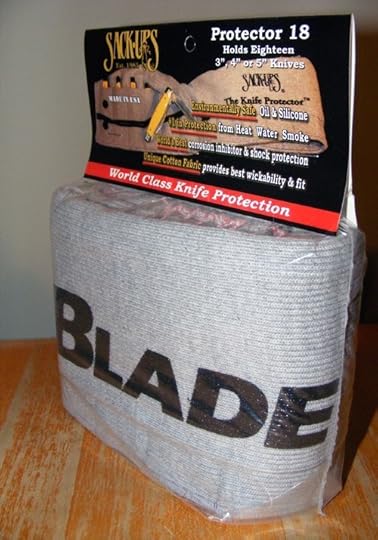

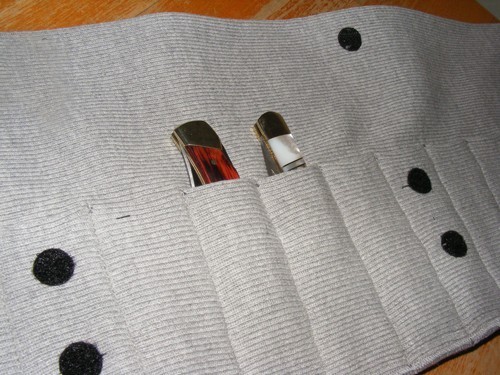
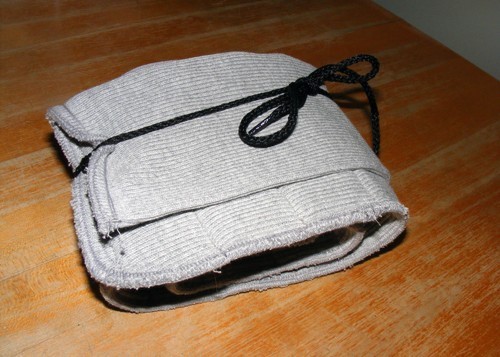
In addition to this fantastic knife roll, my team at work rolled out innovative gun safe lights, a line of easy-to-see shooting targets, a nifty gun safe dehumidifier, a couple exclusive knives (here and here) and a lot more. Why? Because the same people who consume our content are also interested in this kind of gear. We might as well be the ones selling it to them.
The point of me bringing this up is half to show off work I'm proud off and half to demonstrate how much traditional publishing changed. It's not all about books anymore.
March 28, 2015
New Novel Alert: Her Psychic Powers are Fake, but the Missing Girl She Needs to Find is Real
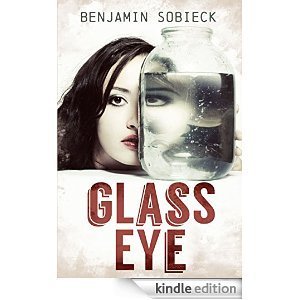 It's release day for my new novel, Glass Eye: Confessions of a Fake Psychic Detective. You'll find this yarn of mystery available at all the major e-book retailers, from Amazon and Barnes & Noble to Apple and Kobo. Here's the synopsis:
It's release day for my new novel, Glass Eye: Confessions of a Fake Psychic Detective. You'll find this yarn of mystery available at all the major e-book retailers, from Amazon and Barnes & Noble to Apple and Kobo. Here's the synopsis:
Her psychic powers are fake, but the missing girl she needs to find is real.
Zandra is a renowned "psychic" who knows her abilities come from her wits, not anything supernatural. Her skills are put to the ultimate test when the police turn to Zandra after the search for a missing girl goes cold. But there's a catch. The girl's wealthy father was the prime suspect in the unsolved murder of Zandra's husband years ago.
Can Zandra put aside her grudge for the sake of a missing child? Or is this the perfect opportunity for revenge?
I'm hoping this novel becomes the first in a series. There's certainly plenty of inspiration for it. Part of Zandra's character is based on a "real" psychic from Stevens Point, Wisconsin, where I used to live. This person apparently slept with clients' wallets to bring them financial luck. Of course, those wallets didn't always make it back to their owners. This took place during the height of the recession, so this psychic's victims were probably desperate as all hell. To the surprise of no one, this psychic eventually skipped town.
With Glass Eye, I wanted to explore what would happen if the police tapped such a "psychic" to help with a high-profile case. How long could the scam go on? And could the same skills that make someone a great "psychic," like being able to notice little details, also be applied toward clever detective work? The idea percolated in my head for years before I finally pulled the trigger on the novel.
Zandra isn't as evil as that Stevens Point psychic, but she's no saint, either. Part of the fun of writing Glass Eye is the way she slips between hero and villain. That back and forth is what makes her one of the most fleshed out characters I've ever written.
I hope you'll pick up a copy of Glass Eye. The e-book on sale now for $2.99, which is less than the average palm reading. Go for it, slice.
March 24, 2015
Should Characters Use Sugar to Heal Gun/Knife Wounds?
TLDR: Using sugar is old school, but it can be effective for minor injuries. Modern characters would likely use a commercial coagulent and antibiotics.
That same Facebook conversation I mentioned in the post about "digging out the bullet" also brought up the topic of sugar. A trick from back in the day involved packing a wound with sugar. Apparently, this came up in the movie Shooter, where an injured character dumped sugar into a wound. (I only have the gist of what happened, I haven't actually seen Shooter.)
 As it turns out, packing granulated sugar (the white stuff, not brown sugar) over a wound can keep the injury dry, helping to decrease healing time. It's the same concept behind Band-Aid bandages with the absorbant pad under the adhesive. Sugar can also help coagulate blood to stop bleeding.
As it turns out, packing granulated sugar (the white stuff, not brown sugar) over a wound can keep the injury dry, helping to decrease healing time. It's the same concept behind Band-Aid bandages with the absorbant pad under the adhesive. Sugar can also help coagulate blood to stop bleeding.
However, the sugar trick is some seriously old school ditch medicine, and works best on minor injuries. For a more serious wound, applying pressure is the better bet to stop the bleeding, not dumping in a handful of sugar, followed by legit antibiotics. Stopping the bleeding is always step one with injuries, as Dr. James Hubbard, MD, writes in my favorite ditch medicine book, the Living Ready Pocket Manual: First Aid. (Disclaimer: we publish this at my work, so I'm biased, but I still reference this thing a ton.)
If a character is in a modern setting with access to a First Aid kit, chances are good he/she would use a coagulating sponge, pad or powder. QuikClot is one of the most popular on the civilian market, although I believe the technology started out in the military. It stops the bleeding in a snap. For $17 on Amazon, it might not be a bad idea to keep some around the house.
P.S. If you're short on sugar, research shows honey is another option to help with healing times.
With thanks to writer bud Laura Roberts for the conversation. All images via Amazon.
Have you pre-ordered my new crime novel, Glass Eye, yet? It's about a renowned psychic who knows her "powers" are a scam, but has to find a missing girl. You can pick it up for $1.99 for a limited time while it's on pre-order.


